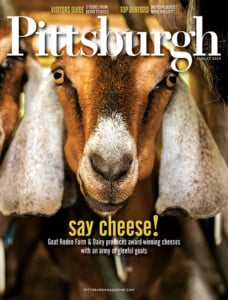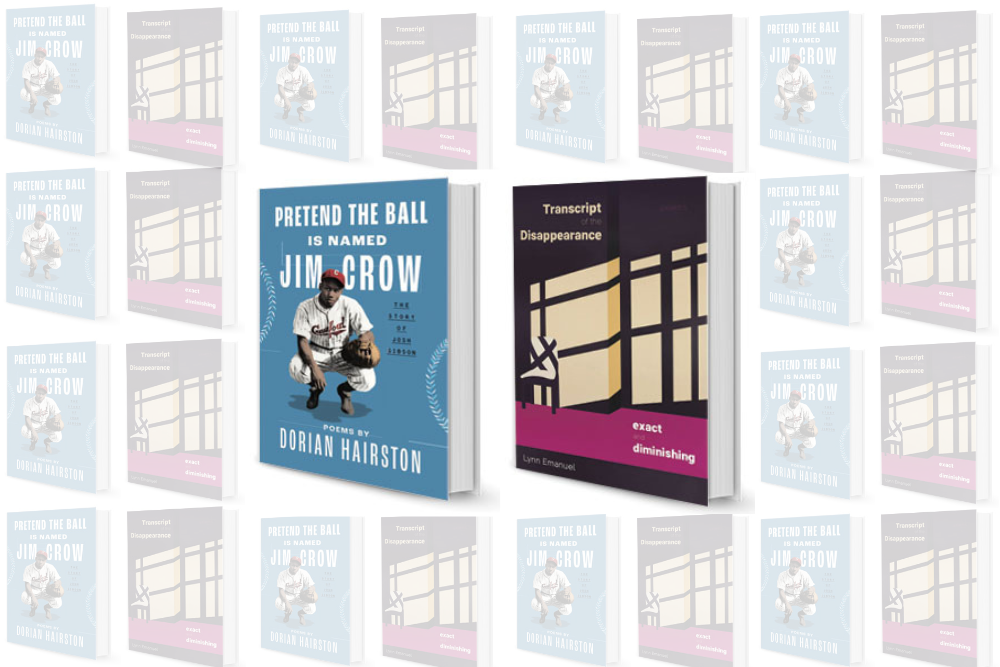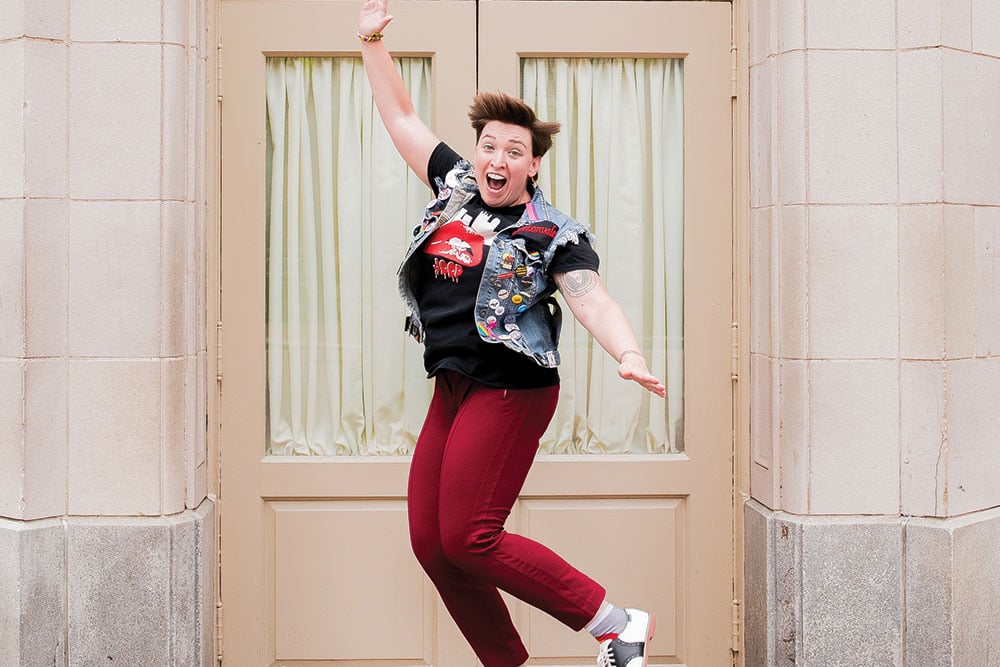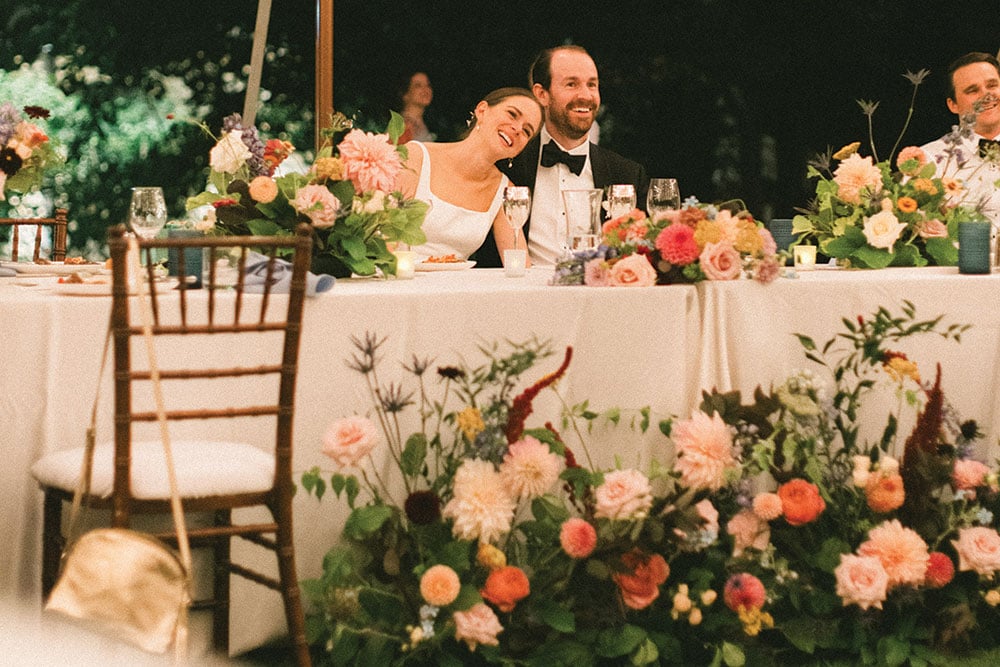Venus Williams Hosts a Podcast About This Carnegie Museum of Art Exhibit
“Widening the Lens: Photography, Ecology, and the Contemporary Landscape” challenges our inherited environmental narratives.
“Every landscape picture tells a human story in some way,” says Carnegie Museum of Art Curator of Photography Dan Leers. “Oftentimes, those stories are not readily visible or readily apparent on the surface.”
“Widening the Lens: Photography, Ecology, and the Contemporary Landscape,” the fourth iteration of the Hillman Photography Initiative at the Carnegie Museum of Art, aims to tell those stories. With nearly 100 works from 19 artists, pressed flowers, silk impressions and moving shockwaves are utilized to represent environmental change, allowing viewers to truly see their landscape, and, hopefully, begin to envision an equitable way forward.
“We as a museum are seeking to address [the] issues of our time, specifically by showing artists who are thinking about these ideas,” says Leers, who organized the exhibit along with Keenan Saiz, Hillman Photography Initiative project curatorial assistant.
Related: Modern Museum of Art Showcases Braddock Documentarian
The exhibit is separated into four themes — Archive, Remembering, Pathfinding and Horizon. Visitors begin in the section titled “Archive,” where they’ll be greeted by the multimedia work “The Histories (Crépuscule)” from Philadelphia-based artist David Hartt.
“We have an image that has been blown up and turned into a tapestry — a jacquard weaving — of Kingston, a port city in Jamaica,” explains Leers.
The work examines the legacies of the slave trade from Jamaica to Newfoundland, Canada, documenting the cycle of “colonial ships traveling from Jamaica, where they were gathering sugar and rum and people, bringing them to Newfoundland, and then gathering up cod — a relatively abundant resource — to feed the people who were working in Canada, but then also [to] send back to the colony,” Leers says.
In the section titled “Pathfinding,” some small — yet quite affecting — black and white gelatin silver prints might evade your view. Pittsburgh native Sam Contis’ “Untitled” selections from the series “Overpass” (2020–2022) consist of nine prints, each examining mobility within the landscape, as well as limitations to that mobility.

SAM CONTIS, AMERICAN, BORN 1982. “UNTITLED,” 2020-2022 GELATIN SILVER PRINT. CARNEGIE MUSEUM OF ART, PITTSBURGH: PURCHASED WITH FUNDS PROVIDED BY THE WILLIAM TALBOTT HILLMAN FOUNDATION, 2023.32.4. © SAM CONTIS. COURTESY OF THE ARTIST AND KLAUS VON NICHTSSAGEND GALLERY, NEW YORK.
During COVID-19 lockdown conditions, Contis was residing in the English countryside where her primary form of entertainment was going on walks. She began noticing stone pathways and gates, known as stiles, that offer passage through private properties.
Upon further research, Contis found that the British Constitution requires that there be a way, even on some privately owned land, for people to hike and experience the natural environment.
The prints born out of this discovery focus on the stones, the fences, and the passageways themselves. Contis seemingly omits the natural environment from view for emphasis on accessibility as a privilege worthy of documentation.
“This got us thinking — how do we define boundaries and how do we delineate the landscape?,” Leers asks. “What does that keep in and what can we let through?”
Before, while and after interacting with the exhibit, Leers encourages viewers to “[think] about where we’ve been, so that we might know maybe where we’re going” — to “think about our current relationship to our environment and what it might look like in the future.”
Leers views this as “acknowledging the environmental crisis that we are currently in, but also trying to think about and foreground artists who are really seriously thinking about what that means and how we might navigate it,” rather than an alarmist call for viewers to reconcile with their own mortality. “I think that is how a monumental change can happen.”
The exhibition’s opening on May 11 featured poetry readings by Appalachian-born Saretta Morgan and Pulitzer Prize-winning poet Natalie Diaz, guided nature walks around the museum’s campus, and a sonic performance by 2023 MacArthur Fellow Raven Chacon.
The museum also has a high-profile collaboration with Venus Williams, tennis champion and arts advocate, to encourage public engagement with the exhibition. Williams will host a six-part podcast series about the exhibit with episodes released starting in June.
“I’m honored to partner with Carnegie Museum of Art on ‘Widening the Lens,’ a deeply meaningful project that integrates art, environment and intentional storytelling,” Williams said in a press release.
“The participating artists and thinkers you’ll hear on the ‘Widening the Lens’ podcast reflect diverse, global perspectives and a vast range of backgrounds and experiences; I am proud to help amplify their voices as they prompt us to consider new and alternative ways of relating to our landscapes through photography.”
Says Leers: “Our hope [is not] that people come out of this exhibition saying, ‘Oh my goodness, there’s nothing to be done,’” but instead that, “as we exit the exhibition, we’re thinking about, ‘OK, what can I do? How can I live in this world?’ Or, ‘What can this world look like?’”
“And for that,” he says, “we always look to artists here at the museum to help us find our way.”















